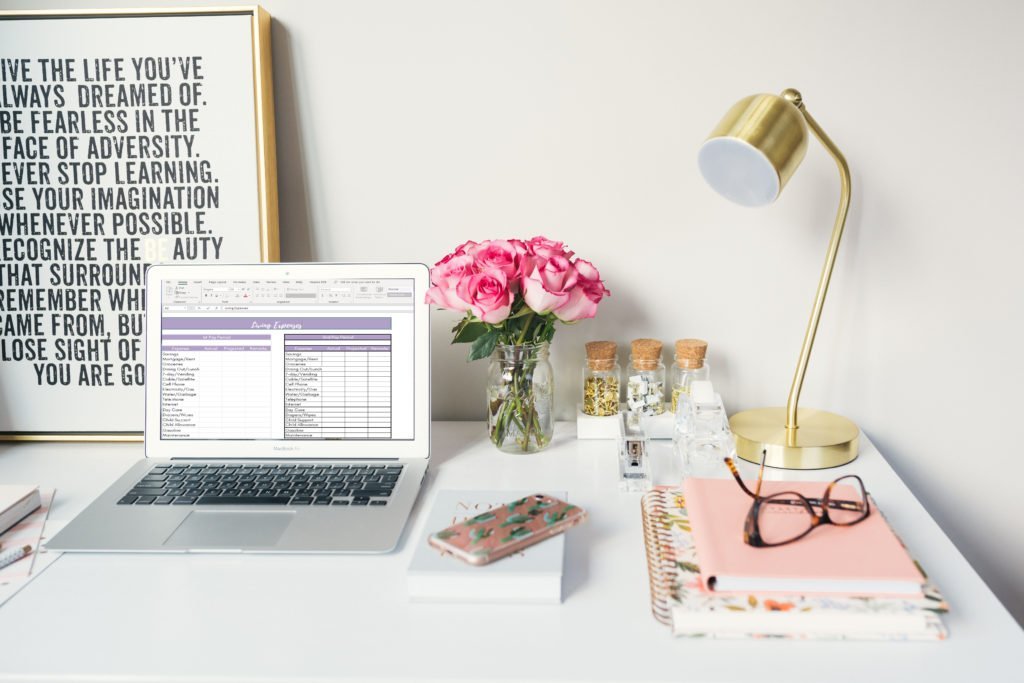
I bet that when you open almost any financial website or book, one of the first things it says is, “Let’s create a budget.” I think a budget can be good, but what does it really do for you? There is something I think everyone needs more than a budget: A Spending Plan.
Yes, a spending plan is much more empowering and helpful than a budget.
When I ask Google to define ‘budget’, the Google dictionary shows this:
budg·et /ˈbəjət/
Noun
an estimate of income and expenditure for a set period of time.
“keep within the household budget”
I find that many people use their budget just as this says. They write out a list of their income and what they are willing to say their expenditures are. Then they go on their merry way, still using their money just as they have been. Their budget did nothing but provide estimates of what they think they are spending. Then they realize that month after month their credit card balances continue to grow, and they are getting nowhere with their savings. These people often end each month wondering where all their money has gone!
But isn’t a plan better than an estimate?
I believe that a budget is just the first step to creating a Spending Plan for your money that will, in turn, serve to guide, direct, and limit what you do with your money. This plan will enable you to move toward your financial goals and begin to reach them. How amazing would that be? To see your debts going down and your savings going up?! I want that for you too, so let’s look at how to create a Spending Plan. We do in fact start with a budget.
First, create a budget.

List all your income and expenses in an organized fashion. This is simply to assess what you have coming in and going out.
A budget is made up of 4 parts; income, living expenses, debt repayment (if you have any), and the summary, or totals. You can download my simple budget sheet that you can fill in and it will do the math for you. You will find it in my Resource Library. You can get the password for the Library by subscribing to my newsletter in the sidebar or at the bottom of the post.
List all the income sources for your household. Add them together for your total household income.
List all your living expenses. Start by focusing on financial obligations. Use your bank account or look up recent bills to ensure you are using correct figures. Consider housing, utilities, phone, tv, food, auto expenses like gas and maintenance, personal care, household spending, child care, and other child-related costs, entertainment, hobbies and any set deposits to savings. If something doesn’t fit into one of these categories, either create a new one, or list it under other. Don’t leave anything out!
The easiest way to get accurate figures is by using your bank statement to add up what you have spent on each category for the last month or two. If you use multiple cards, use statements from all of them. Don’t forget all those pesky memberships and auto refills you have signed up for. Don’t include debt repayment in this list, except for your mortgage. I include housing, whether it is a mortgage or rent, in living expenses. Add up these expenses to find your total household living expenses.
Now list every debt and the minimum monthly payment due. You will not want to put what you try to “pay ahead or extra” here, simply list the minimums. Add up the minimum payments to find your total debt repayment.
The summary is where the totaling is done. Now you will find out if you have a surplus (extra) or deficit (not enough) during the month. . Start with your total household income, subtract your total household living expenses, subtract your total debt repayment, the number you get is either your surplus (positive amount) or deficit (negative amount). *If you have downloaded my budget sheet, this math is done for you.
Income – Living Expenses – Debt Repayment = Deficit or Surplus

Second, start with your current spending and debt totals to decide a realistic financial goal.
Now that you know if you have a surplus or deficit at the end of the month and how much you are spending on living expenses and debt repayment, you can decide how you would like to see your finances improve. What is your next financial goal going to be?
Using the following list of priorities as a guide, what area would you like to focus on first? Turn that into a goal. For example, I have a surplus on my monthly budget, but not much, only about $50 left over after expenses. I only have about $250 in my savings account, so my first goal is going to come from Priority 2 below. I will work to save $1000.
Suggested order of financial priorities:
Priority 1: Eliminate any deficit by reducing spending or increasing income.
The only way to fix a problem budget is to either reduce spending or increase income. First, see if there are any expenses you can do without. Check things like subscriptions, streaming media that isn’t necessary, tv that is not under contract, reducing eating out or coffee and snack runs, or unneeded spending. Next, try to increase income by starting a side hustle or taking on more work.

Priority 2: Build your emergency fund to $1000.
There is nothing better than being able to pay for an unexpected expense with cash. A 2017 report by the Federal Reserve found that only 60% of Americans can afford to pay for a $400 emergency expense without borrowing money or selling something. Keeping at least $1000 in savings will help reduce your stress when something happens. You won’t need to worry about where to get the money to take care of it.
Priority 3: Get your employer match on your 401K.
Don’t delay on getting free money for retirement by paying the required amount into your 401k.
Priority 4: Reducing harmful debt.
Harmful debt is consumer debt that is costing you a lot of interest. Debt typically in this category is credit cards, payday loans, personal loans, furniture, jewelry or other store-based loans, as well as high-interest car loans.
Priority 5: Increase Savings.
Build your savings beyond that initial $1000. A good next goal would be to save 3-6 months of your monthly expenses (including debt payments). This would set you up to weather a job loss or decrease in income.
Priority 6: Reduce other debt.
Pay down things like car loans, student loans, and your mortgage.
Third, use your goal to guide you as you create your Spending Plan.
Go back to your budget and decide what you will change in your budget to help you work toward your goal.
For example, if my current goal is to start saving $100 per paycheck, I could do the following:
- I am going to add $100 to my savings category on my budget.
- I realize that this puts me $50 a month in deficit.
- I will cut back $50 a month from my household spending in order to keep my budget even.
- The next thing I need to figure out is how to limit this new lower spending goal.
There are all kinds of ways to limit your own spending overall or in specific categories.
One way is to use cash. Withdraw your limit of cash after each paycheck or at the beginning of each week. Cash is the best way to teach yourself a new limit. There is an emotional connection between most people and cash bills. When you have to hand over a $20 bill or a $100 at the cash register you may feel slight anxiety and experience it as increased heart rate or shallower breathing. When sliding a card, your body doesn’t feel it in this way; there is a pronounced disconnect that allows limits to be ignored. When your cash is gone, it’s gone. This will help you enforce your own spending limit. Just be sure to leave all your
Another way (one I like to use) is opening a separate account for my spending. I have a checking account that is only for my spending during the month. I auto deposit my spending limit into it with each paycheck. Then I only carry that card and check the balance often, so I know how much I have left to spend. If there is not enough for what I want, I have to wait to get it or I have to decide if I need it bad enough to get the money out of savings. This helps me evaluate purchases more closely.
A third way is to set up a tracking app, like Mint or Clarity Money. Use these apps to set up your spending plan with your new spending limits. Then check it often to follow where you are with your spending during the month and know when you are out of money. The one caveat of these apps is that they are more hands on. You will have to check that your spending is being added to the correct categories in your budget to truly stay on track. If you are willing to keep up with this, these apps can be a great tool for monitoring your limits and goal tracking.
Remember my goal from earlier? After strategizing how I will limit the $50 reduction in spending, I set up an auto transfer of $100 to go directly to my savings account. If I wait until the end of the month to execute my saving it is much more likely NOT to happen!

Fourth, monitor your spending plan during the month and revisit month to month to see what is working and what is not.
A spending plan is something that should change as you figure out what is working best for your household. You will also want to adjust it as you meet goals andplan to meet your next one.
Creating a spending plan will take your budget practice to a whole new level. You will actually start to see your finances get better as you have a plan and follow it to meet your goals!
What things do you find helpful when trying to limit your spending and stick to a financial plan? Please share with the rest of us by commenting below.
Then be sure to join our Facebook community HERE. We will encourage each other as we create and begin to execute these new Spending Plans.

- Can You Bring an Inhaler on a Plane? Important Tips - February 5, 2024
- How Can I Hide Money From My Husband Before Our Divorce? - January 21, 2024
- Comprehensive Credit Card Forum Guide: Best 10 to Join - November 17, 2023

Leave a Reply